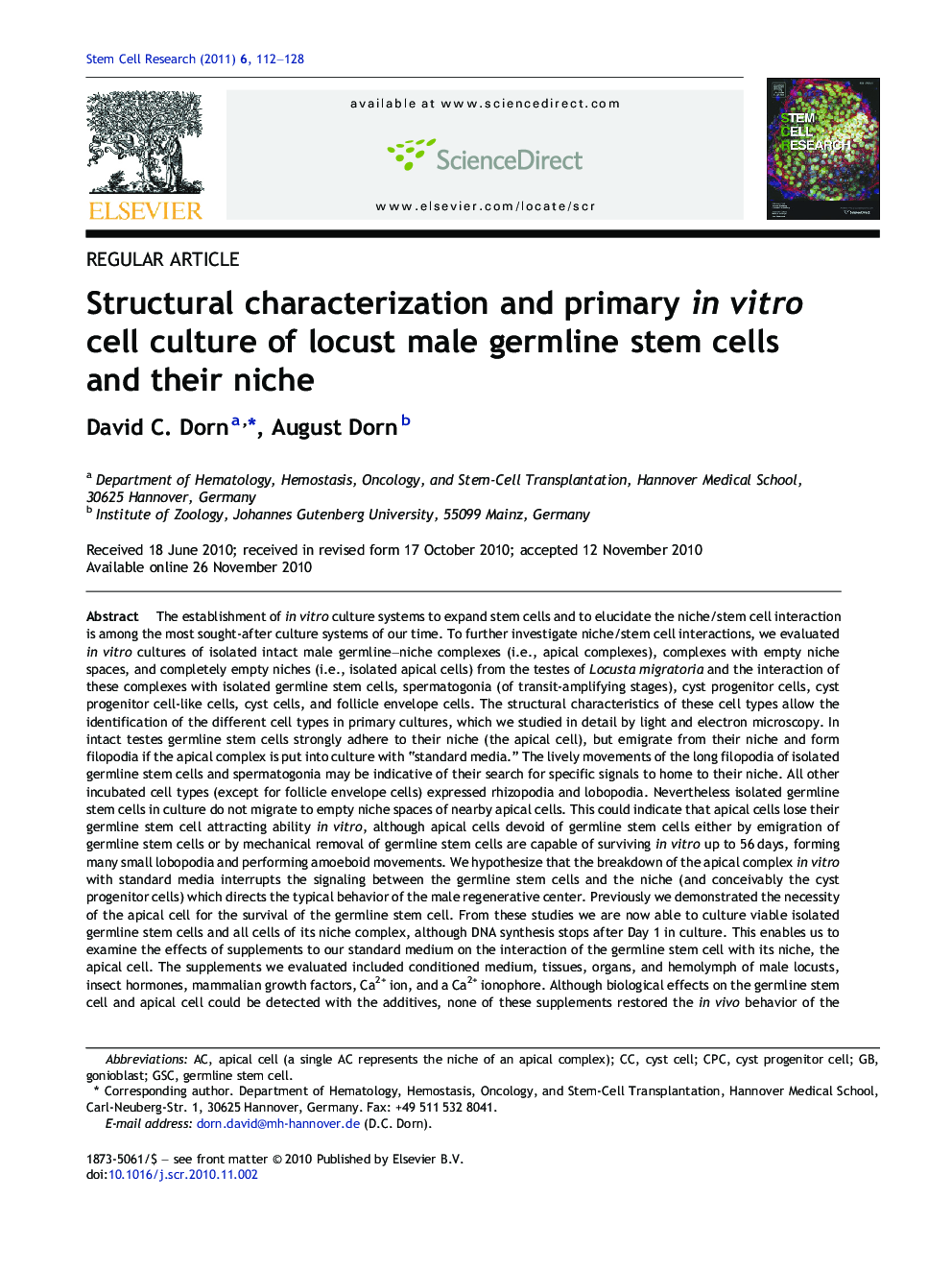| Article ID | Journal | Published Year | Pages | File Type |
|---|---|---|---|---|
| 2094347 | Stem Cell Research | 2011 | 17 Pages |
The establishment of in vitro culture systems to expand stem cells and to elucidate the niche/stem cell interaction is among the most sought-after culture systems of our time. To further investigate niche/stem cell interactions, we evaluated in vitro cultures of isolated intact male germline–niche complexes (i.e., apical complexes), complexes with empty niche spaces, and completely empty niches (i.e., isolated apical cells) from the testes of Locusta migratoria and the interaction of these complexes with isolated germline stem cells, spermatogonia (of transit-amplifying stages), cyst progenitor cells, cyst progenitor cell-like cells, cyst cells, and follicle envelope cells. The structural characteristics of these cell types allow the identification of the different cell types in primary cultures, which we studied in detail by light and electron microscopy. In intact testes germline stem cells strongly adhere to their niche (the apical cell), but emigrate from their niche and form filopodia if the apical complex is put into culture with “standard media.” The lively movements of the long filopodia of isolated germline stem cells and spermatogonia may be indicative of their search for specific signals to home to their niche. All other incubated cell types (except for follicle envelope cells) expressed rhizopodia and lobopodia. Nevertheless isolated germline stem cells in culture do not migrate to empty niche spaces of nearby apical cells. This could indicate that apical cells lose their germline stem cell attracting ability in vitro, although apical cells devoid of germline stem cells either by emigration of germline stem cells or by mechanical removal of germline stem cells are capable of surviving in vitro up to 56 days, forming many small lobopodia and performing amoeboid movements. We hypothesize that the breakdown of the apical complex in vitro with standard media interrupts the signaling between the germline stem cells and the niche (and conceivably the cyst progenitor cells) which directs the typical behavior of the male regenerative center. Previously we demonstrated the necessity of the apical cell for the survival of the germline stem cell. From these studies we are now able to culture viable isolated germline stem cells and all cells of its niche complex, although DNA synthesis stops after Day 1 in culture. This enables us to examine the effects of supplements to our standard medium on the interaction of the germline stem cell with its niche, the apical cell. The supplements we evaluated included conditioned medium, tissues, organs, and hemolymph of male locusts, insect hormones, mammalian growth factors, Ca2+ ion, and a Ca2+ ionophore. Although biological effects on the germline stem cell and apical cell could be detected with the additives, none of these supplements restored the in vivo behavior of the incubated cell types. We conclude that the strong adhesion between germline stem cells and apical cells in vivo is actively maintained by peripheral factors that reach the apical complex via hemolymph, since a hemolymph–testis barrier does not exist. The in vitro culture model introduced in this study provides a platform to scan for possible regulatory factors that play a key role in a feedback loop that keeps germline stem cell division and sperm disposal in equilibrium.
